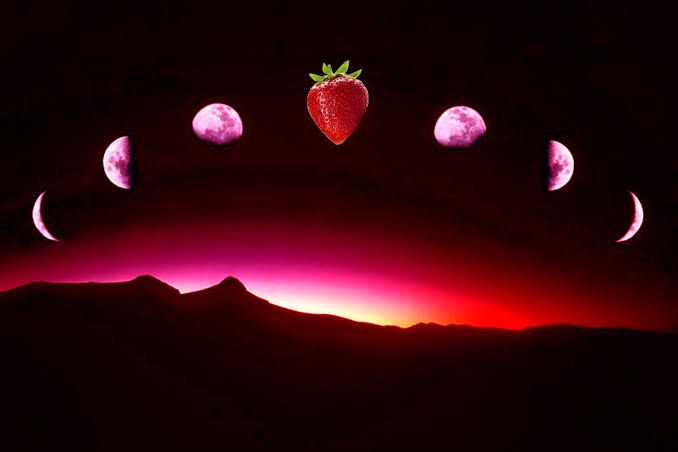Strawberry Moon Whispers: A Tale of Ode'miin Giizis
Once upon a moonlit night, on the third day of June, the full moon crept into the sky, casting a soft silver light over the world below. This wasn't just any full moon. It was Ode'miin Giizis, the Strawberry Moon, a celestial event steeped in stories

Once upon a moonlit night, on the third day of June, the full moon crept into the sky, casting a soft silver light over the world below. This wasn't just any full moon. It was Ode'miin Giizis, the Strawberry Moon, a celestial event steeped in stories and traditions from the Ojibwe people. This moon bore the name of the ripe, sweet berries that blanketed North America during this time, a sign of life's sweetness and abundance.
The small community of Ojibwe prepared for this special time of the year, a season of unity, forgiveness, and celebration. Houses were cleaned, gardens were tended, and tables were adorned with delicious food, prepared lovingly for the annual feasts. Most importantly, a grand bowl filled with the first strawberries of the year was placed at the center of every table.
Little Nookomis, a curious and imaginative child, was particularly excited for Ode'miin Giizis. She was finally old enough to participate in the annual ritual of letting go of judgments, an act symbolizing purification of the heart and mind. Nookomis had a small, hand-woven pouch filled with small stones. Each stone, she was taught, represented a judgment or a grudge. During the peak of the Strawberry Moon, she would throw the stones into the river, surrendering her burdens to the great moon.
Meanwhile, up in the heavens, the moon was not perfectly full. A portion of it rested in shadow due to the moon's rotation, a little like Nookomis and her pouch of stones. The moon, too, had parts unseen and untouched. But on this day, under certain celestial alignments, the moon would be 100% full, its hidden aspects bathed in silver light. Just like Nookomis, the moon would let go of its shadows.
As Nookomis stood by the river under the fully illuminated moon, she felt a shiver of anticipation. One by one, she picked up the stones, feeling their cool hardness. Each stone was acknowledged, held, and then, gently, thrown into the dark, swirling waters. As the last stone left her hand, she felt a sense of lightness she had never felt before. Her heart mirrored the moon above, bright and unburdened.
From that day forward, every Ode'miin Giizis was a reminder to the people of Ojibwe - and to Nookomis - of the cyclical nature of life. It was a time to celebrate the sweet fruits of the earth, the unity of family and friends, and the liberation from judgment. And even though, once in a blue moon, the moon would appear full twice in a month, the Strawberry Moon held a unique place in their hearts - a celestial symbol of forgiveness, unity, and the eternal dance between light and shadow.
Photographing these lunar events became a tradition for the community, capturing the ethereal beauty of Ode'miin Giizis. Every photograph was a reminder of the gentle teachings of the Strawberry Moon, timeless lessons reflected in the silver light of the celestial beacon that continued to whisper tales of unity, forgiveness, and love.




